Genres: To Each One's Taste
At the start of your project, you usually decide on the genre to which your game will belong. Unless you come up with something completely new and previously unseen, chances are high that your game idea will fit into one of the broad genres currently popular. Most genres have established game mechanics standards (for example, control schemes, specific goals, and so forth.). Deviating from these standards can make a game a great hit, as gamers always long for something new. It can also be a great risk, though, so consider carefully if your new platformer/first-person shooter/real-time strategy game actually has an audience.
Let's check out some examples for the more popular genres on the Android Market.
Casual Games
Probably the biggest segment of games on the Android Market consists of so-called casual games. So what exactly is a casual game? That question has no concrete answer, but casual games share a few common traits. Usually, they feature great accessibility, so even non-gamers can pick them up easily, which immensely increases the pool of potential players. A game session is meant to take just a couple of minutes at most. However, the addictive nature of a casual game's simplicity often gets players hooked for hours. The actual game mechanics range from extremely simplistic puzzle games to one-button platformers to something as simple as tossing a paper ball into a basket. The possibilities are endless because of the blurry definition of the casual genre.
Abduction and Abduction 2 (Figure 3–1), by the one-person shop Psym Mobile, is the perfect casual game example. It belongs to the subgenre of “jump-'em-up games” (at least that's what I call them). The goal of the game is it to direct the continually-jumping cow from platform to platform, and to reach the top of the level. On the way up, you'll battle breaking platforms, spikes, and flying enemies. You can pick up power-ups that help you reach the top and so on. You control the cow by tilting the phone, thereby influencing the direction it is jumping/falling. Easy-to-understand controls, a clear goal, and cute graphics made this game one of the first hits on the Android Market.

Figure 3–1. Abduction (left) and Abduction 2 (right), by Psym Mobile
Antigen (Figure 3–2), by Battery Powered Games LLC, is a completely different animal. This game was developed by one of the co-authors of this book, however, we aren't mentioning it to plug anything, but because it follows some of the input and compatibility methods we outline in this book. In Antigen, you play as an antibody that fights against different kinds of viruses. The game is actually a hybrid action puzzler. You control the antibody with the onscreen D-pad and rotation buttons at the top right. Your antibody has a set of connectors at each side that allow you to connect to viruses and thereby destroy them. While Abduction only features a single input mechanism via the accelerometer, the controls of Antigen are a little bit more involved. Not every device supports multitouch, so we came up with a couple of input schemes for all possible devices; Zeemote controls would be one of these. To reach the largest possible audience, special care was taken to make the game work even on low-end devices with 320×240 pixel screens, but it also scales up nicely to the modern tablets running at 1280×800.
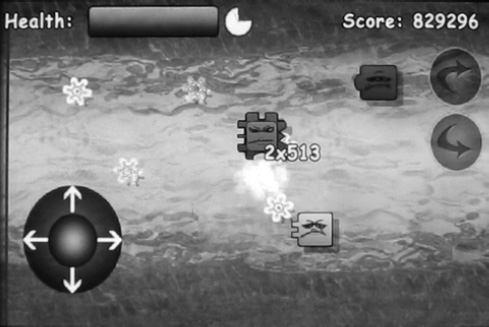
Figure 3–2. Antigen, by Battery Powered Games LLC
A list of all of the possible subgenres of the casual game category would fill most of this book. Many more innovative game concepts can be found in this genre, and it is worth checking out the respective category in the market to get some inspiration.
Puzzle Games
Puzzle games need no introduction. We all know great games like Tetris and Bejeweled. They are a big part of the Android gaming market, and they are highly popular with all segments of the demographic. In contrast to PC-based puzzle games, which usually just involves getting three objects of a color or shape together, many puzzle games on Android deviate from the classic match-3 formula and use more elaborate, physics-based puzzles.
Super Tumble (Figure 3–3) is a superb example of a physics puzzler. The goal of the game is to remove blocks by touching them, and to get the star sitting on top of the blocks safely to the bottom platform. While this may sound fairly simple, it can get rather involved in later levels. The game is powered by Box2D, a 2D physics engine.

Figure 3–3. Super Tumble, by Camel Games
U Connect (Figure 3–4), by BitLogik, is a minimalistic but entertaining little brain-teaser. The goal is to connect all the dots in the graph with a single line. Computer science students will probably recognize a familiar problem here.
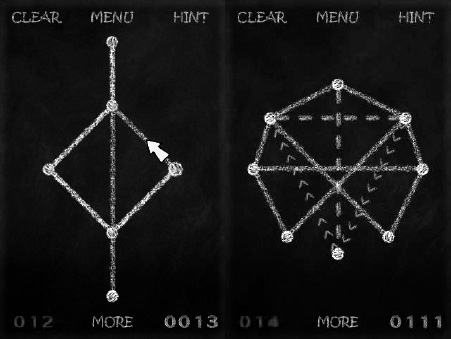
Figure 3–4. U Connect, by BitLogik
Of course, you can also find all kinds of Tetris clones, match-3 games, and other standard formulas on the market. The games listed here demonstrate that a puzzle game can be more than just another clone of a 20-year-old concept.
Action and Arcade Games
Action and arcade games usually unleash the full potential of the Android platform. Many of them feature stunning 3D visuals, demonstrating what is possible on the current generation of hardware. The genre has many sub-genres, including racing games, shoot-'em-ups, first- and third-person shooters, and platformers. This segment of the Android Market is still a little underdeveloped, as big companies that have the resources to produce these types of titles are hesitant to jump on the Android bandwagon. Some indie developers have taken it upon themselves to fill that niche, though.
Replica Island (Figure 3–5) is probably the most successful platformer on Android to date. It was developed by former Google engineer and game development advocate Chris Pruett in an attempt to show that one can write high-performance games in pure Java on Android. The game tries to accommodate all potential device configurations by offering a huge variety of input schemes. Special care was taken so that the game performs well even on low-end devices. The game itself involves a robot that is instructed to retrieve a mysterious artifact. The game mechanics resemble the old SNES 16-bit platformers. In the standard configuration, the robot is moved via an accelerometer and two buttons: one for enabling its thruster to jump over obstacles and the other to stomp enemies from above. The game is also open source, which is another plus.
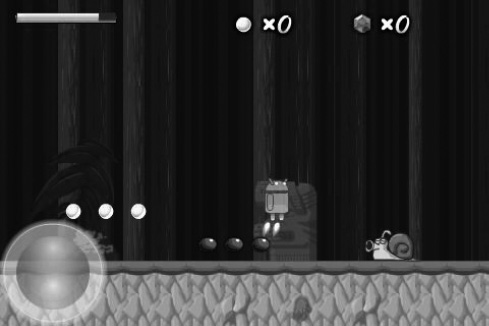
Figure 3–5. Replica Island, by Chris Pruett
Exzeus (Figure 3–6), by HyperDevBox, is a classic rail shooter in the spirit of Starfox on the SNES, but with high-fidelity 3D graphics. The game features it all: different weapons, power-ups, big boss fights, and a ton of things to shoot. As with many other 3D titles, the game is meant to be played on high-end devices only. The main character is controlled via tilt and onscreen buttons—a rather intuitive control scheme for this type of game.
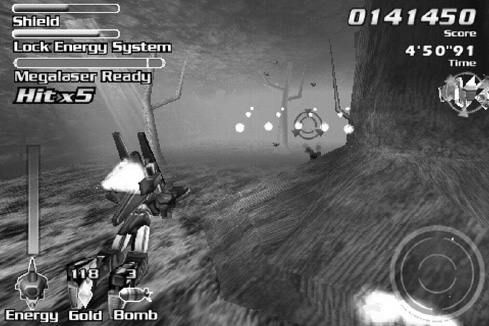
Figure 3–6. Exzeus, by HyperDevBox
Deadly Chambers (Figure 3–7), by Battery Powered Games LLC, is a third-person shooter in the style of such classics as Doom and Quake. Like Antigen, this game was developed by a co-author of this book. We mention it in order to contrast it with Exzeus. The game is a third-person/first-person shooter hybrid, with full OpenGL ES 3D animated graphics, guns, explosions, and everything else you'd expect from that sort of game. Unlike most games of this type, which only work on the latest hardware, we took great care to make it run even on low-end devices, such as the Hero and G1. The game also offers a variety of input schemes, so that you can play the game on single-touch screens, multitouch screens, keyboards, and the Zeemote JS1. Technically, the game is a major feat, especially considering that it was programmed by a single person over a period of roughly six months and is playable on a G1 phone.
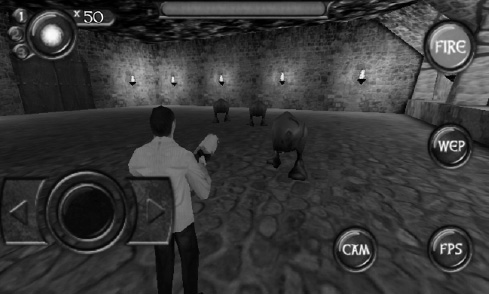
Figure 3–7. Deadly Chambers, by Battery Powered Games LLC
Radiant (Figure 3–8), by Hexage, represents a brilliant evolutionary step from the old Space Invaders concept. Instead of offering a static playfield, the game presents side-scrolling levels, and it has quite a bit of variety in level and enemy design. You control the ship by tilting the phone, and you can upgrade the ship's weapon systems by buying new weapons with points you've earned by shooting enemies. The semi-pixelated style of the graphics gives this game a unique look and feel, while bringing back memories of the old days.
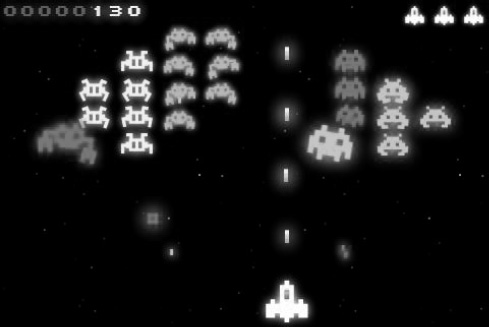
Figure 3–8. Radiant, by Hexage
The action and arcade genre is still a bit underrepresented on the market. Players are longing for good action titles, so maybe that is your niche!
Tower-Defense Games
Given their immense success on the Android platform, we felt the need to discuss tower-defense games as their own genre. Tower-defense games became popular as a variant of PC real-time strategy games developed by the modding community. The concept was soon translated to standalone games. Tower-defense games currently represent the best-selling genre on Android.
In a typical tower-defense game, some mostly evil force is sending out critters in so-called waves to attack your castle/base/crystals/you name it. Your task is to defend that special place on the game map by placing defense turrets that shoot the incoming enemies. For each enemy you kill, you usually get some amount of money or points that you can invest in new turrets or upgrades. The concept is extremely simple, but getting the balance of this type of game right is quite difficult.
Robo Defense (Figure 3–9), by Lupis Labs Software, is the mother of all tower-defense games on Android. It has occupied the number-one paid game spot in the market for most of Android's lifetime. The game follows the standard tower-defense formula, without any bells and whistles attached. It's a straightforward and dangerously addictive tower-defense implementation, with different pannable maps, achievements, and high scores. The presentation is sufficient to get the concept across, but not stellar, which offers more proof that a well-selling game doesn't necessarily need to feature cream-of-the-crop graphics and audio.

Figure 3–9. Robo Defense, by Lupis Labs Software
Innovation
Some games just can't be put into a category. They exploit the new capabilities and features of Android devices, such as the camera or the GPS, to create new sorts of experiences. This innovative crop of new games is social and location-aware, and it even introduces some elements from the field of augmented reality.
SpecTrek (Figure 3–10) is one of the winners of the second Android Developer Challenge. The goal of the game is to roam around, with GPS enabled, to find ghosts and catch them with your camera. The ghosts are simply laid over a camera view, and it is the player's task to keep them in focus and press the Catch button to score points.

Figure 3–10. SpecTrek, by SpecTrekking.com
Apparatus (Figure 3–11) is a game that was featured on Android tablets. It is an innovation on many previous physics-builder games, but is executed in such a way that players can't help but get hopelessly addicted to trying to solve the puzzles by creating the goal machine. It uses simple, but nice-to-look-at, 3D graphics, and it runs on nearly every device from Android 1.6 up.
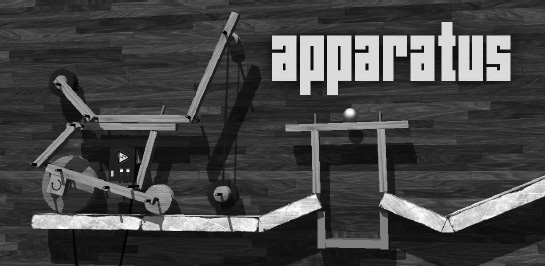
Figure 3–11. Apparatus, by BitHack
Many new games, ideas, genres, and apps don't appear to be games at first, but they really are. Therefore, when entering the Android market, it's difficult to really pinpoint specifically what is now innovative. We've seen games where a tablet is used as the game host and then connected to a TV, which in turn is connected via Bluetooth to multiple Android handsets, each used as a controller. Casual, social games have been doing well for quite a while, and many popular titles that started on the Apple platform have now been ported to Android. Has everything possible already been done? No way! There will always be untapped markets and game ideas for those who are willing to take a few risks with some new game ideas. Hardware is becoming ever faster, and that opens up entire new realms of possibilities that were previously unfeasible due to lack of CPU horsepower.
So, now that you know what's already available on Android, we suggest that you fire up the Market application and checkout some of the games presented previously. Pay attention to their structure (for example, what screens lead to what other screens, what buttons do what, how game elements interact with each other, and so on). Getting a feeling for these things can actually be achieved by playing games with an analytical mindset. Push away the entertainment factor for a moment, and concentrate on deconstructing the game. Once you're done, come back and read on. We are going to design a very simple game on paper.
